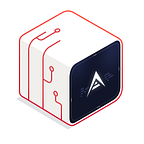To begin this discussion, we must first start with how this all began. ACES began as a project to prove ARK’s encoded listener concept by connecting ARK to Ethereum, and allowing users of ARK to interact with the Ethereum blockchain without needing to own any Ether themselves. This is where the name ACES is derived from, as it stands for Ark Contract Execution Services.
Motivation for ACES
While other interoperability projects focus on token exchanges, we wanted to focus more on the actual functionality of a blockchain. We wonder, “why would one ever want to exchange for a currency other than ARK, unless that other currency does something special besides just being a currency?” In the short term, switching to a more widely accepted cryptocurrency may be useful, but in the long run, we should see wider acceptance of many cryptocurrencies, including ARK, and the advantages of BTC, ETH, and others will diminish. Our philosophy is that exchanging coins is mostly not very interesting, unless the coins you are exchanging for allow you to do something special. Ethereum proved to be a great choice to test this concept because of its ability to deploy smart contracts.
We asked, “can a user of ARK deploy a smart contract to the Ethereum blockchain without having to own any Ethereum?” This is more complex than simply exchanging ARK coins for ETH coins, and having the user figure out the rest. To fulfill these requirements, a user of ARK should receive the following benefits:
1) They must never be required to use an ETH wallet (or any ‘external’ blockchain wallet, for that matter).
2) They must be able to have the contract deployed by executing a special transaction on the ARK blockchain.
3) They must never need to directly purchase external coins during this process.
4) They should be able to confirm that their contract was successfully deployed by receiving information about both blockchains’ transactions.
These requirements drive the design and purpose of ACES, and you can see, we were successful in delivering on these desires with the first iteration proof of concept.
What ACES is NOT.
ACES is not a decentralized exchange. The ACES philosophy is to allow providers to supply any blockchain service that is compatible with a shared marketplace. Each provider is responsible for their own service, and each user is responsible for using reputable providers. There are many projects focusing on decentralized exchanges, including ARK itself, and the ACES project leaves those details to the many projects putting their energy into that effort. Instead, ACES focuses on user experience and functionality. An ACES application utilizes the best available protocols to allow users and developers to take advantage of blockchain interoperability in the most well documented and easy to understand way. Consumers will be presented with intuitive forms to set up transaction types that fulfill various blockchain services. Developers will have access to various APIs to allow them to integrate services directly inside of their own applications. The ACES marketplace ensures that the most reputable providers rise to the top, and gives consumers the ability to filter to the best providers, just as you would in well known marketplaces like Amazon. In some cases, these providers may be providing a decentralized service, but in others, they may be individual providers with some unique differentiation, such as lower fees and higher customer service. (Decentralized services by design should have higher fees and lower customer service as a trade off for increased trustlessness).
Why choose ARK?
ARK provides all of the infrastructure desired by this project. ARK has the most user friendly wallet, fast confirmations (8 seconds), SmartBridge vendor fields, and a wide variety of developer APIs. These features are integral to the ACES philosophy. User friendliness ensures that consumers calling services will not be overwhelmed. Fast confirmations are important, because when dealing with multiple blockchains, you also deal with multiple confirmations. Interoperability is at least twice as expensive and twice as slow, but because ARK is extraordinarily fast and cheap, the ARK side of interoperability contributes negligibly to cost and slowness. The SmartBridge vendor fields allow for services to be called with ease using what we call ‘Formless Functions’ (requests made in the vendor field that can be interpreted by apps).The wide variety of developer APIs will bring a greater robustness of service implementations that can be compatible with the marketplace.
What to expect from this blog
I will be posting regularly on the progress of the ACES roadmap, as well as share release announcements, milestone tutorials (linked to github), and other ideas on how to improve the robustness of the ACES concept.
Next Steps
Over the next few posts, I will be posting a detailed roadmap of our goals, and explaining why we believe they are useful and valuable to the blockchain ecosystem.
